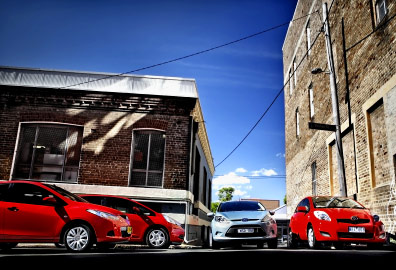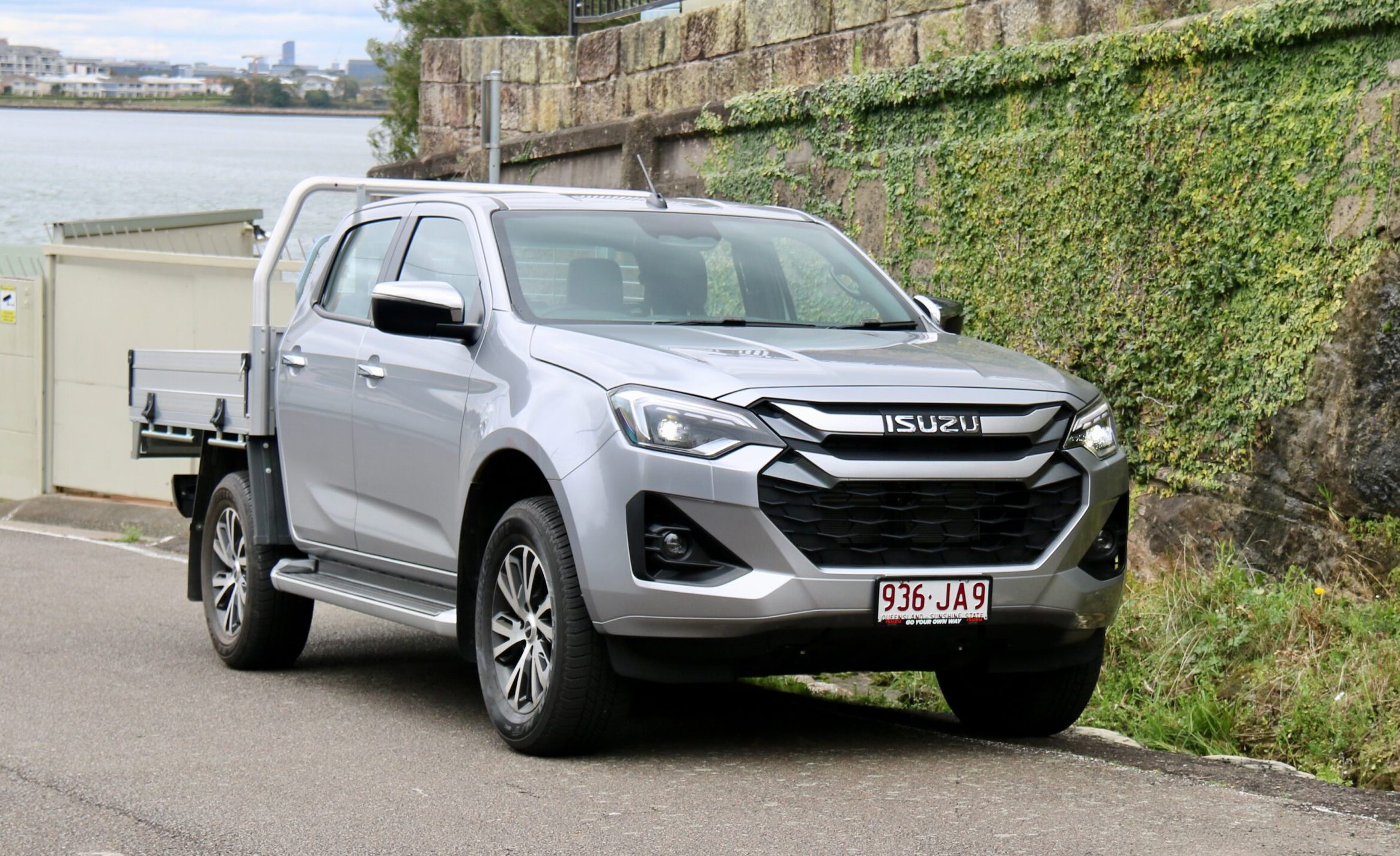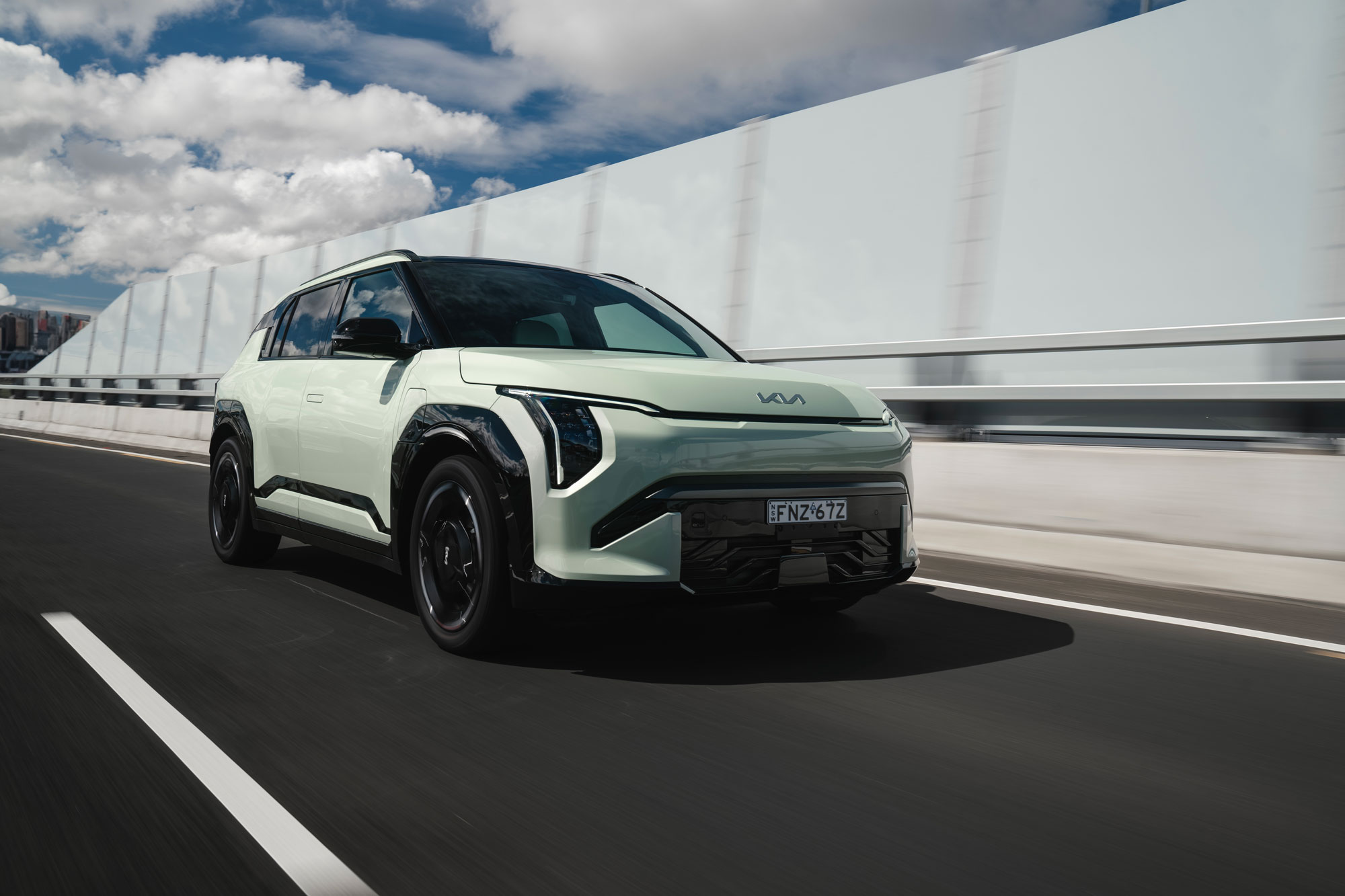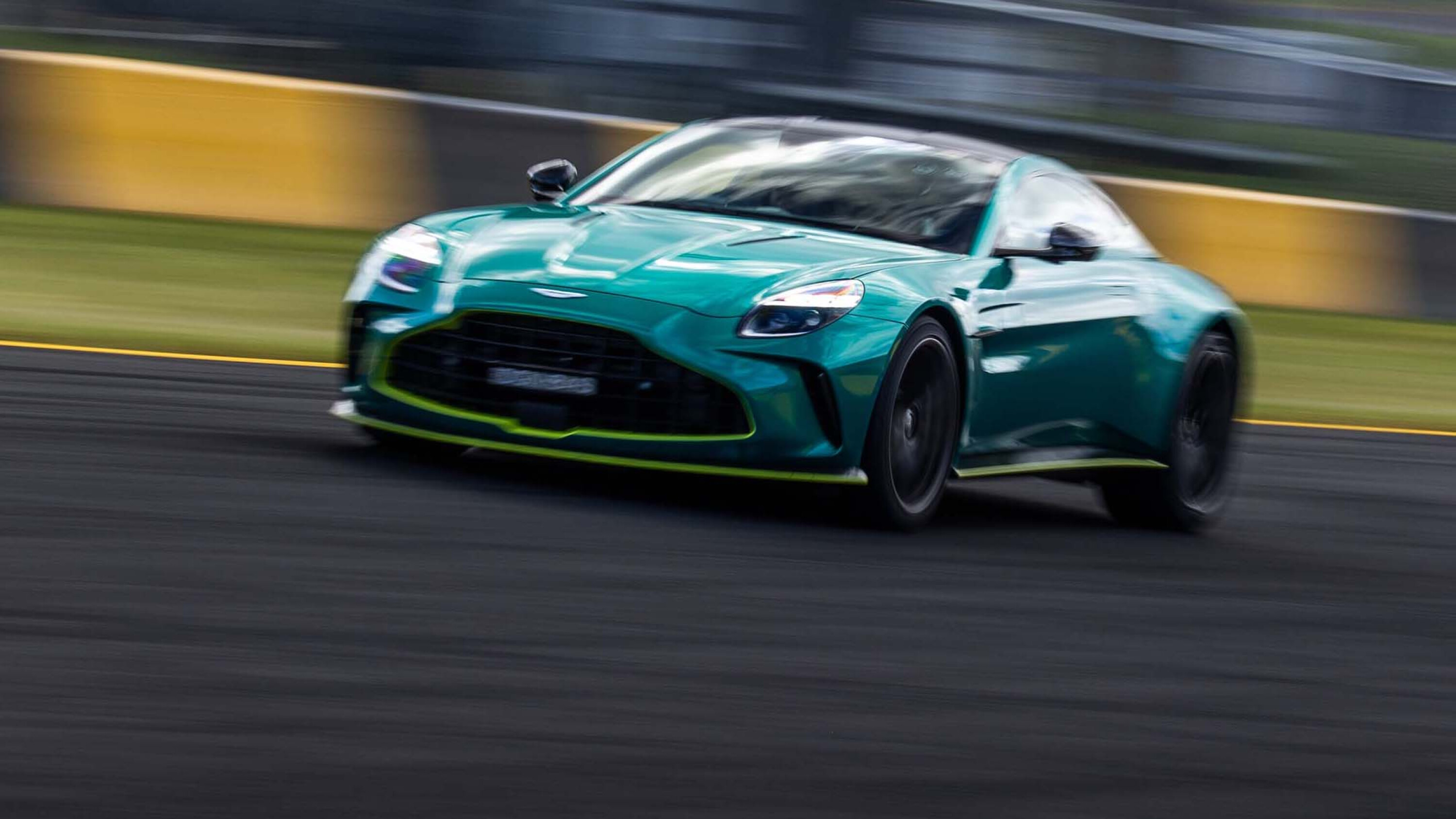Nobody with even a cursory knowledge of automotive history believes Ford’s claim that the new Fiesta represents the most significant model to wear the Blue Oval badge since the Model T a century ago. Yet, from Ford Australia’s point of view, it’s a realistic indicator of the importance of the new Fiesta in arresting the company’s declining fortunes. Both Ford’s European-sourced small cars – Fiesta and Focus – deserve to sell in far greater numbers, but despite glowing press reports, local buyers have preferred rival models from Toyota and Mazda; in ’08, the Fiesta was outsold by more than four-to-one by the class-leading Yaris, and more than two-to-one by the Mazda 2.
The new global Fiesta is to be made in Europe, China, the USA and, from 2010, Thailand – the latter to become the source for Fiestas sold here. Ford believes it’s good enough to transform the sales charts and elevate the Blue Oval’s poor performance in the light-car class. Can the challenger upset the status quo, represented here by the Yaris, 2 and Jazz? Let’s hit the road and find out.We still know this category as light cars – Australians have never taken to the more descriptive supermini label – but this current generation is a pointer to how cars inexorably grow in size and weight. Twenty-five years ago, Ford’s best-selling Laser small car (another model developed with Mazda) weighed 230kg less than this new Fiesta, yet virtually duplicated it in length (the difference just 10mm).You don’t always get what you want and we wanted manual, mid-spec five-door hatches to pitch against the competitively priced $18,490 Fiesta LX, in theory at the low end of a $680 price spread.Instead, Honda supplied an automatic Jazz VTi and Mazda an entry-level 2 Neo, though Toyota did find us a mid-spec Yaris YRS. However, since the Jazz is the only car in its class with a five-speed auto option, and with Mazda having upgraded the tyres on the Neo (after Wheels criticised their wet-weather behaviour) to 15-inch Maxx specification, it’s hardly a fatal compromise.In layout and drivetrain our foursome conform to the class-standard mechanical framework of front struts and rear torsion-beam axle, transverse in-line 16-valve four-cylinder engines of around 1.5-litres and electric power assisted steering. No surprises that the 2 and the Fiesta are essentially the same size (the wheelbase varies by an insignificant 1mm) since they share a jointly development architecture and 50 percent of their under-the-sheetmetal parts.Visually, the proportions of the Ford and Mazda are comparable: steep rising bonnet and wedged waistline, stretched headlights, similar overhangs, rounded rear. Yet the result is two contrasting designs, so there’s no chance of mistaking one for the other. The Fiesta looks bigger than the 2, its aggressive detailing in stark divergence to the simplicity of the more feminine 2, the Nike trainer shoes of cars. During our time with the quartet the testers came to prefer the more elegant Mazda to the trying-too-hard contrived look of the Fiesta. The recent minor facelift does the Yaris no favours, but it remains a good-looking car, a more conservative and taller interpretation of the Fiesta/2 school except for its notably shorter rear overhang that, despite Toyota’s claims, results in an appreciably smaller carrying capacity.The similarity of the basic dimensions suggest the Jazz is more of the same, but the priorities of Honda’s product planners were clearly on space, not style. More than anything else, this is a mini-MPV, the boxy styling replicated by an amazingly roomy and flexible interior. As one perceptive tester remarked, “The Jazz is for mothers, the others are for daughters.”Ford of Europe has developed a signature chassis feel over the past decade. Happily, the Fiesta inherits the attributes of the Focus and Mondeo: crisp steering, firm damping that beautifully controls body movements, and a ride that soaks up the worst ripples and bumps. All enthusiasts (and not just daughters) are going to love the way the baby Ford drives.The steering is a joy, with a super-quick rack – just 2.6 turns – so cohesively mated to the electric power assistance to produce beautifully linear responses. So good is the Ford’s system, only a chassis development engineer could pick the source of power steering assistance. Compared to the 2, which shares much of the same hardware, the Ford’s steering is tuned for greater feel and slightly heavier weighting.The Mazda’s off-centre reactions are instantaneous, and almost too immediate, so, good as the 2’s steering is, the responses to the helm aren’t quite as fluent or progressive as the Fiesta. The Yaris’s steering is almost as fast, but the impression that it feels artificial, as if the engineers wanted to eliminate all sense of connection between the driver and front wheels, never goes away. Yes, you get used to it, but the Yaris lacks the tactile connection that is so intrinsic to the appeal of the Ford.In isolation, the Jazz’s steering is accurate enough and consistent in its weighting, even if it is devoid of any feel. In this company, however, the Honda is slow to turn in and demands appreciably more lock in any given circumstance. The steering only confirms what the styling predicts – the Honda is not about the delivery of overt driver enjoyment.Of course, Ford’s more sporting tyre selection – 195/50R15s Continentals on the LX – is partly responsible for the Fiesta’s terrific dynamics. There is a verve to the Fiesta that sets it apart from its rivals. It has a beautiful chassis that sets a new class benchmark, delivering superior grip, agile handling and responses, and body control that is subtly effective without upsetting the composure of the ride. The Mazda runs it mighty close, yet the nearer you get to the limit the more the driver is aware that the 2 lacks the deftness that makes the Ford such a natural handler. Sadly, the 2 also exhibits the traditional Mazda flaw of excessive road noise.In comparison, the Jazz feels like a minibus, down to the windscreen pillars and the little triangular windows, which create visibility problems in tight corners. Slower to respond, yet sure-footed, the new model is vastly better than the first generation, especially in terms of ride comfort once above the fidgety low-speed phase. The Honda might not have the grip of the 2 or the Fiesta, and the higher driving position only emphasises the bodyroll and the need for better rebound control, but if you accept Honda’s versatility philosophy for the Jazz, this car does a fine job.Which leaves the Yaris. Such is the speed of progress in this category that the once near-class-leading Toyota has fallen off the pace. The suspension is soft so there’s plenty of bodyroll, however it’s so poorly controlled that it feels sloppy. Yet the ride is busy, even choppy, at low speeds. At 110km/h on our challenging ride evaluation road in the NSW Southern Highlands, the Yaris soaked up the punishment as well as any of its trio of rivals, but not without plenty of vertical and lateral body movement. Disappointingly, neither the Honda or the Toyota offer a stability control system, even as an option.At this point, you could logically conclude that most of the Fiesta’s intensely involving personality comes from its fun-to-drive chassis. But did we mention the engine? Ford’s own 1.6 (the 2 runs a uniquely Mazda drivetrain) is the sweetest here, eager to spin well beyond the modest 6000rpm redline, yet with the strongest low- and mid-range torque. Combine this punch with easily the shortest gearing (32.2km/h per 1000rpm in fifth for 3400rpm at 110km/h), and you have all the ingredients for a car that’s both easy to drive slowly, yet also inherently sporting.Not that the standing start numbers demonstrate any superiority – Fiesta, 2 and Yaris are line-ball in taking an identical 10.5sec to hit 100km/h. Fiesta’s advantage only becomes clear in its rolling acceleration times. The lower the revs, the more the little Ford’s greater flexibility is obvious. The 2’s drivetrain runs the Fiesta close, not least because it has a delightful MX-5-style snick-snick gearchange that’s better even than the Ford. And despite having the least power and torque here, it’s also the lightest. In power-to-weight terms, the 2 almost matches the others: 75kW/tonne versus 76 for the Yaris, Fiesta 80 and Jazz 82.On the road the 2 feels gutsy if you’re willing to push the revs, so it comes across as sporting and, like the Yaris, demands more frequent gearchanges than the Fiesta. It doesn’t sound as enthusiastic as the Ford, but nor is it as hectic and thrashy up high as the Yaris. Most annoying is the non-linear behaviour of the 2’s electric throttle and the tendency to momentarily power-on after the driver lifts off. The Toyota, too, suffers the flaws of a poorly tuned electronic throttle. On the Yaris it’s incredibly sensitive and contrives with a sharp clutch action to make it difficult to drive smoothly in stop-start conditions. Despite the need to belt the engine for a respectable level of performance, the Toyota posted a clear economy advantage of circa 1.0L/100km.First impressions suggest the Honda is a four-speed auto, so tall is the fifth ratio. It’s only when cruising above 90km/h that the now torque-converter (not the CVT of the first generation) tranny decides the engine can accept top gear. At 45.6km/h per 1000rpm – for 2400rpm at 100km/h – the fifth ratio’s gearing is obviously intended to improve steady-state fuel consumption. The engine is eager, helping the Jazz to feel quicker than the figures suggest, and doesn’t really begin to sing until the tacho needle’s punching above 4000rpm. Apart from the occasional stumble, especially when the fluid is cold, the auto works well, though it is bizarre not to be able to select and hold fourth gear. Drive it manually and the choice is first, second or third. Our COTY testing experience points to the manual improving the driving experience, though perhaps not as much as you might expect, a tribute to the automatic’s efficiency.’Amidst the gloom and doom facing the motor industry, right now is a great time to be buying a small car. This quartet proves you get a whole lot of car for your money: improved performance and economy, greater comfort and versatility, increased features and safety and, most of all, a level of refinement that was unimaginable in the class a decade ago.The Yaris (admittedly the oldest car here) is the first to drop out. Toyota build quality and good fuel economy are simply not enough to cancel out the manual car’s poor suburban driveability, the need to thrash the coarse engine for respectable performance, and a restless low-speed ride. Toyota marketing muscle will almost certainly ensure the Yaris remains numero uno, but there are now obviously better cars in the class.The Jazz is one of them. If space is your prime requirement look no farther. From the driver’s seat, the Honda feels half a class larger than the Toyota and the one-hand rear-seat folding operation is inspired. However, its driving experience lacks the dynamic flair and polish of the Mazda and Ford.The Mazda 2 is a brilliant baby, a car with a charming personality that deserves the attention of any potential small-car buyer. No, it doesn’t drive quite as confidently as the closely related Fiesta, but that Mazda badge stands for Japanese quality, something the German-made Ford can’t offer. For many buyers, that is going to be a compelling advantage. Yet, for those who find driving appeal irresistible – surely most Wheels readers – the Fiesta is the clear winner. Add best-in-class refinement and equipment levels, and the Ford is the most talented supermini – sorry, light car – ever sold in Australia. And the most significant Ford small car since the Laser.





